By Brian Hibbs

This, as they say, changes everything.

Before I really start getting into it, let me be clear that I don’t actually have any “insider” information here – I certainly don’t have access to Diamond’s financial records or Marvel’s or my fellow stores. But I’ve been observing the industry and asking questions for the better part of four decades to have a reasonably high level of confidence in what I expect the results to be – but I sure as heck could be wrong about who is going to zig and how another is going to zag!
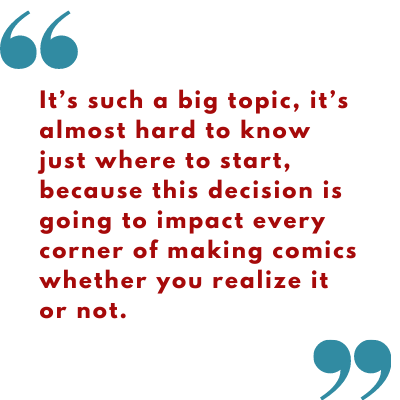
Now certainly a number of stores closed during COVID, but it appears to actually be a very small number at the end of the day, and at least a couple of stores have opened since this file was generated, so I think we’re very OK believing that there are still very roughly 2500 accounts who would want to buy Marvel comics, in the US alone.
Bear in mind that the American Bookseller’s Association says that there are about 2400 Independent Book Stores in the US, this means the number of stores dedicated to comics – what we call the Direct Market (or DM) – is as large, if not larger, of an installed base.
Penguin Random House (which I am going to call PRH from here out) is the single largest seller of books in the US, representing 24% of the US book market in 2019 – and (as you can follow from that link) they’re trying to buy Simon & Schuster (S&S) who represent an additional 9% of sales. Traditionally DM stores buy nearly 100% of their comics product from Diamond, and these sales are wholly separate from normal Book Market calculations. In 2019, sales of comics in comic stores was roughly $525 million. Sales in all bookstores (not just indie bookstores) including through Amazon, were roughly $570 million)
One of the open questions over the last decade is “Well, but how much of the dollar volume of DM stores is staying within Diamond?” I, for one, have been aggressively re-sourcing many of my goods away from Diamond and into the “book” channels for multiple years now. Why? Because on book-format product, Diamond is not a very competitive supplier: they charge shipping on all product sent, while standard terms in the booksellers world are freight free at extremely modest order sizes (PRH ships freight free for just $200 in re-orders!), and Diamond adds a regressive 3% “reorder fee” on all restocks. But, up until now, they’ve been effectively the sole and single source of periodicals.
How Diamond does business can be a little confusing if you’re not super tuned in, so let me try to run it down. In the Old World, Diamond was the “sales agent” for DC and Marvel comics – Diamond didn’t own the books, nor set the Terms of Sale, they were “just” the getting-to-market mechanism in terms of creating catalogs, and fulfilling and shipping orders, but Marvel and DC actually were the supplier of record. Discounts were given to retailers on a sliding scale (unique for both of those pubs) ranging between 35-59% (DC capped at 57%). Those massive discounts, along with the nature of the DM as (very, very generally) a superhero clubhouse-oriented market, resulted in DC and Marvel being roughly 70-80% of their sales of comics product. This is very different than in the book world, where Marvel and DC are more like 15% of graphic novel sales through bookstores.
Then Diamond has distribution deals with many vendors – at the least the “Premier” publishers at the front of the book including Image, Dark Horse, IDW, Boom! and Dynamite – but this tranche was typically more like a traditional distribution set up, where the ruling Terms of Sales were Diamond’s, not the publisher’s. These vendors combined were still only roughly 15-18% of Diamond’s comics sales. The only non-premier vendor that cracked 1% at Diamond in a typical month was Viz.
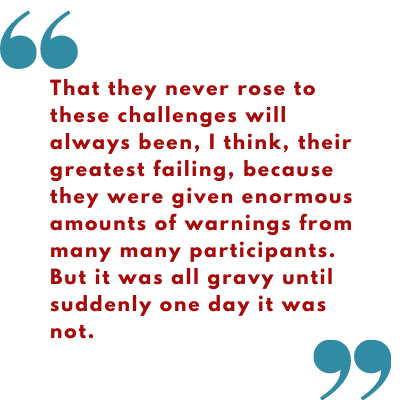
Now, this applies primarily to periodical comics, and for Direct Market stores, only – most publishers were set up with bookstore distribution elsewhere. DC, Dark Horse and IDW are all at PRH for bookstore sales, Marvel is at Hachette, and Boom! is at Simon & Schuster. Diamond also has a bookstore distribution business (Diamond Book Distributors), and Image and Dynamite are solely distributed that way.
For (virtually, I’m not privy to exact contract details!) every other vendor, Diamond is a “wholesaler”, where Diamond is buying and selling vendor’s goods at their own risk. The DM has a solid enough preordering system and mentality that says risk is extremely low, and it’s even more mitigated by that damn 3% “reorder fee” – and the to-retailer discount for many after that caps at 45%. Individual periodicals and books from these publishers are only stocked if Diamond thinks they have commercial prospects (so: rarely).
What IS a “Direct Market” retailer, by the way? For all practical purposes these are self-defining terms. There’s no term sheet describing the difference between a “book” store and a “comics” store, and I have radical doubts one could even find a common description that worked in a universal fashion. In practice Diamond was never particularly discriminating (in fact it is crystal clear that a meaningful percentage of “stores” on that Marvel leaked doc were actually people without storefronts or buying clubs, both of which are expressly against Diamond’s Terms of Sale) – so certainly a “bookstore” could have a Diamond account. Just a few did – mostly because most of them appear to value returnability over margin – I would love to debate someone from book retail about this difference, someday!
But how many DM stores were sourcing graphic novels outside of Diamond? Sort of a big open question. Starting in 2018, I switched the majority of my book purchases to “Anyone But Diamond” (we’d been buying “small press” from Cold Cut or B&T for, gosh, some 20 years before that!) just from economics – not having to pay shipping virtually always offset the difference in discount. I was seeing shipping run at about 6% of invoices when I was buying graphic novels primarily from Diamond! I imagine a meaningful number of stores quietly shifted business over the years, and Diamond “never noticed”!
Here’s the thing: Diamond makes a lot of profit from charging for shipping, from charging (someone) that “reorder fee”, and, oh yeah, from debt-servicing. Lots of folks have been into Diamond for lots and lots of money over the years, and Diamond has always operated as the “bank” of the industry, keeping storefronts afloat, as well as helping publishers float print runs in some cases. I think it’s at least possible that a significant percentage of Diamond’s profit doesn’t come from the actual distribution of goods, but from their panoply of fees and services charges.
There have been many, many, many efforts to get Diamond to change things over the years. I personally have spent at least twenty years trying to encourage company VPs to modernize their shipping and discount structures. The clear advantage that Diamond has over other distro options is that comics and comic shops are in their DNA, and they had the best chance to “find the next Bone”, or to encourage the next rising publisher, and to ultimately make comics a better place. But sadly, it was like they liked being in a little box that mostly marked for DC & Marvel, and they understood being in their little box, and they didn’t seem to me to actually want to get outside of that little box.
That they never rose to these challenges will always be, I think, their greatest failing, because they were given enormous amounts of warnings from many many participants. But it was all gravy until suddenly one day it was not.
As for the math of comics: there are essentially what I would consider to be two overall “models” that work. One is the bookstore model of having a patron who gives you an upfront advance on royalties so you can produce work straight-to-book hopefully to make it up on the backend (Kickstarter, et al, also largely works on this same theory, just not with a traditional “publisher”). And then there is the DM model where you serialize the work, paying for it as it’s made, so that the final collection(s) of that work is all pure gravy (this would also be, very roughly, how Manga works too).
I am very much in the DM camp on this (shock!). The advance-on-royalties for most cartoonists is preposterously low for the creation of a 200 page labor-intensive manuscript. From what I know of advances for a large swath of creators (especially young and starting out ones), it tends to work out to payments not much better than (federal) minimum wage. And while royalties can pay out, especially for authors at the top of the pyramid (and boy do they, if you’re on the top!), I would say the overwhelming majority of books never actually pay out for the work involved. The serialization of comics at least makes it possible that creators can make a living wage… or even a middle class one (!) during the process of creation itself, because of page rates. It’s also the thing that supports the existence of a class of stores actually focused on the single media – serialization breeds regular customers who become much more engaged with comics. It is also simply easier to convince a customer to take a flier on a $3-4 object than a $20 one.
That’s the 10,000 feet view of comics, at least as I see it.
*****
Next, we need to look into the weeds and try to see what the downstream impact of Marvel’s move are likely to be.
So, much like Heidi, I definitely think that (at least part of) this bodes well for comics in that a huge company in the book world is making a reasonably major investment in periodical comics because they think they can make a profit in doing so. That’s a good sign for the “legitimacy” of periodical comics, overall.
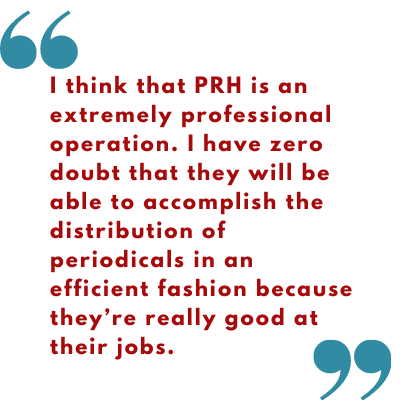
Before I say anything else, I think that PRH is an extremely professional operation. I have zero doubt that they will be able to accomplish the distribution of periodicals in an efficient fashion because they’re really good at their jobs. I have no concerns about them filling demand, about accurately packing and billing, about dealing with damages or shortages, etc – they’ve been a smooth, smooth distribution partner for my stores, and I very much enjoy working with them. It’s likely there will be a learning curve, but I think they’ll conquer it pretty fast.
However, periodical comics are extremely high-touch to distribute, and relatively low-ROI (Return-on-Investment) as a result. They are “fragile” and there are very very high customer expectations about how the product arrives, relative to the distribution of books. Most graphic novels that we receive from PRH do not arrive in anything approaching “mint” condition, and they’re setting up an entirely new process, warehouse and workflow to handle the comics, which hopefully will yield comics arriving in good shape – but these things cost time and margin.
I am also not especially sure how much PRH understands just how many micro-circulation individual SKUs they might be looking at. Before the pandemic, Marvel didn’t really have many individual periodicals selling over 60k copies. And that means that the common variants that Marvel seemingly has as its main business model are yielding a lot of SKUs selling under 5k copies each. That’s like 2 copies per store, if that. They, for sure, have SKUs (such as 1:25 or 1:50 covers) that are very likely to have sub-1k circulations – and these are the items retailers will be most fussy about, too. Virtually none of these items retail for more than $5, so we’re probably looking at twenty-five-cents-ish of income for each SKU for PRH, for a lot of fussy hassle?
It’d be super swell if PRH was looking to become a “take all comers” distributor for periodical comics, but I have a very difficult time envisioning anyone looking at the numbers from the outside and thinking that made any sense, rather than just “skimming off the cream”.
My expectation is that, given the Marvel deal starts on 10/1, that PRH is going to take all of Q4 to make sure this is working the way they think it’s going to work, and that they’ll probably wait to add some more publishers until Q1: after 1/1/2022. I would further expect that this would first extend to vendors they already have relationships with, which means for periodicals, probably in order DC, Dark Horse, IDW, and possibly Archie and Titan. (PRH also distros Kodansha, Nobrow, and Vertical, among others – but none of those are really in the periodical business)
I have been told that many of the “premier” publishers are not actually signed with a current contract, and are still working off of the last contract while they negotiate the next one, so it’s very possible that sudden changes could come quickly, as folks appear less contractually limited as perhaps we think. I would imagine that PRH is very eager to get Image’s business (as Image has regular bookstore distro through Diamond Book Distributors, and they are the #3 DM publisher), and I would kind of assume that if the Simon & Schuster deal goes through, then S&S clients (Ahoy, Boom!, Humanoids, Oni, Red5, Scout, Source Point, and Vault all are in the periodical biz, Viz and Z2 pretty much are not – and there are others) could all come on board). But I also think that S&S/PRH merger is a federal anti-trust nightmare… especially for comics, because if you add Viz to the DM business, that’s a huge percentage of the total pie concentrated solely in a single pair of hands.
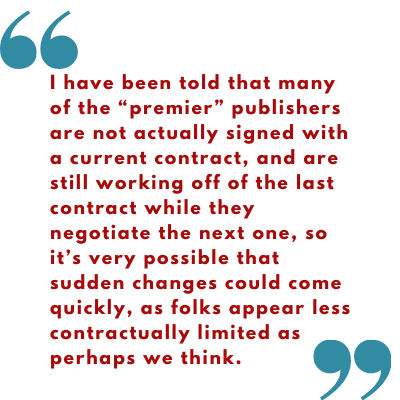
I absolutely expect that DC will add PRH as soon as they humanly can – why wouldn’t they? They are already using PRH in the book industry, and PRH is actually up to the job. I think the experiment with turning their #1 & #2 retail accounts into “distributors” has been a pretty mixed bag (and one of those two dropped out of their own volition!) and virtually every retailer I know wants to stop giving even a penny to their largest retail competitor.
So I think that any store of any meaningful volume whatsoever is going to run to the arms of PRH for 50% off/Free Freight on all shipments. This is not a thing that a markedly smaller Diamond could offer – even if somehow they managed to match the discount (and it’s extremely unlikely it is going to be possible, except as a loss leader, and even that for a very short time), that 4-10% savings on freight is genuinely game-changing. It drove me into the arms of PRH and the other bookstore distros for book format material years ago, as well as almost all of my peers that do meaningful volume in book sales. Now that calculation is going to be obvious to every single retailer.
PRH’s terms actually also make it so that the smallest accounts do the absolute best. There were nearly 400 accounts receiving 35% on Marvel from Diamond. If they can pass the credit check, that’s going to be a 15% increase in raw discount, plus the free shipping on top of that for those stores – that’s fantastic, and you’d have to be a crazy lunatic to stick with Diamond for Marvel after that – and it gives you every incentive to try and actually grow your Marvel sales, at the expense of DC sales via Lunar.
Even for the larger accounts, many of them are going to be at least matching their current terms at Diamond once you adjust for the shipping. It’s really only the biggest of the big who might find themselves in a bad place, but maybe Midtown and DCBS and the handful of others in that space will qualify to be “wholesale” accounts, at the same level as Diamond?
Speaking of DCBS, at the moment they are the “distributor” for DC comics via Lunar Distribution. As far as I have read the reporting, it doesn’t sound like Lunar is an “exclusive” distributor for DC periodicals. I would therefore expect DC to try to allow PRH to also distribute their comics as soon as possible (I believe Q1 ’22). While I don’t think they’re going to stop Lunar from still distributing, as soon as there’s a second viable option I imagine most retailers are going to do whatever is cheapest and easiest which seems likely to make Lunar the One-to-Drop for most accounts. But who knows, maybe they add Marvel to their wholesale and somehow figure out a way to compete. Stranger things have happened, but I find the math to make that work pretty tricksy, and it means Lunar is pitted against a true multi-national corporation, which makes me assume they have little chance to succeed.
And then either way you cut it, it’s hard to not think that Diamond is now is full-on existential peril. How can you possibly lose 75%+ of your volume (Marvel and DC) in a single year, and hope to carry on? Especially when your next five largest vendors are almost certainly going to be actively looking for the fastest escape hatch that they can find.
Here’s the thing that any sensible retailer who will now be ordering comics from PRH is going to realize: PRH is a super-professional organization that is structured in a way that will get the product to you cheaper than Diamond. And once folks get a taste of that, they’re then going to move business in trade paperbacks from IDW, Dark Horse, Archie, Titan, Kodansha because you’re already ordering your Marvel and DC TPs from them – even if all of those publishers don’t change a single thing about their relationship with Diamond, it is absolutely completely inevitable that Diamond will no longer be the supplier-of-choice of those GNs for many retailers: PRH is cheaper.
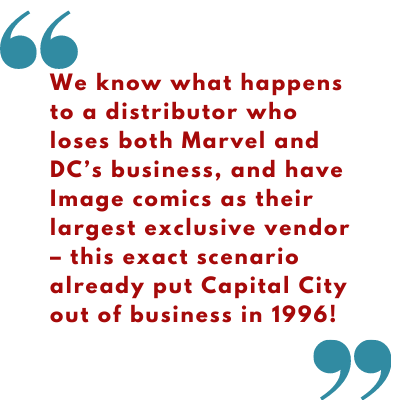
If Diamond goes, what happens to almost every smaller publisher? Diamond had faults, oh it had many faults and more, but they took a lot of chances on a lot of people over the year and built a system that made it possible for new voices to reach a national network of stores and readers in a pretty damn hyper-efficient manner of targeted solicitation. Absolutely with Kickstarter or Patreon or whatever, creators don’t have to go through Diamond any more, and sure, “comics will survive”, but these things are all massively less efficient without a strong centralized system that “took all comers” and actually gave them all a pretty equal shot.
At the end of the day, I don’t think it is possible to run a truly national full-service distributor for periodicals without either Marvel or DC, because I don’t think the volume and velocity of what remains in and of itself is enough to keep the lights on at the minimum level of pricing and service that PRH is going to be the new standard to service.
And, so ultimately my biggest fear is that the vanguard of independence for making comics, the ability of a Teenage Mutant Ninja Turtles or a Bone or even a Walking Dead to rise up “out of nowhere” and to build that periodical behemoth which then allows indy creators to leverage the book format, is about to be severely tested, and perhaps entirely lost. And while people will find a way to make comics –of course they will –the likeliest result is going to be that comics will start to pay a lot less for creators as a general class, and comics will get “safer” and less experimental as even more corporate control is consolidated. I’d rather that Eastman & Laird or Jeff Smith or Robert Kirkman & co are the ones who get to reap the rewards nstead of giant multi-national corporations – and this has always been the greatest promise as well as the greatest gift of the Direct Market.
The ironic thing to me is that many pundits are all “Hooray! A monopoly is dead!”, not recognizing that what it will almost certainly lead to… a bigger monopoly, with even higher gates to get over. What they never understood is just how much Diamond allowed work to come on to market – of course, Diamond barely understood that either, which is where the tragedy at the heart of this farce is.
Don’t get me wrong, PRH is going to be a great partner for Marvel, and for all of the DM stores that haven’t yet done business with them. The largest bulk of stores are going to end up doing better on the lines that PRH distributes – though clearly there is a meaningful percentage who are absolutely going to come out significantly worse – but it’s all but certain that we’re going to have multiple major and minor players who will be irrevocably harmed by this, and we’ll be dealing with the fallout of these for a decade to come or more.
I wish us all well.
**************************
Brian Hibbs has owned and operated Comix Experience in San Francisco since 1989, was a founding member of the Board of Directors of ComicsPRO, has sat on the Board of the Comic Book Legal Defense Fund, and has been an Eisner Award judge. Feel free to e-mail him with any comments. You can purchase two collections of the first Tilting at Windmills (originally serialized in Comics Retailer magazine) published by IDW Publishing, as well as find an archive of pre-CBR installments right here. Brian is also available to consult for your publishing or retailing program.


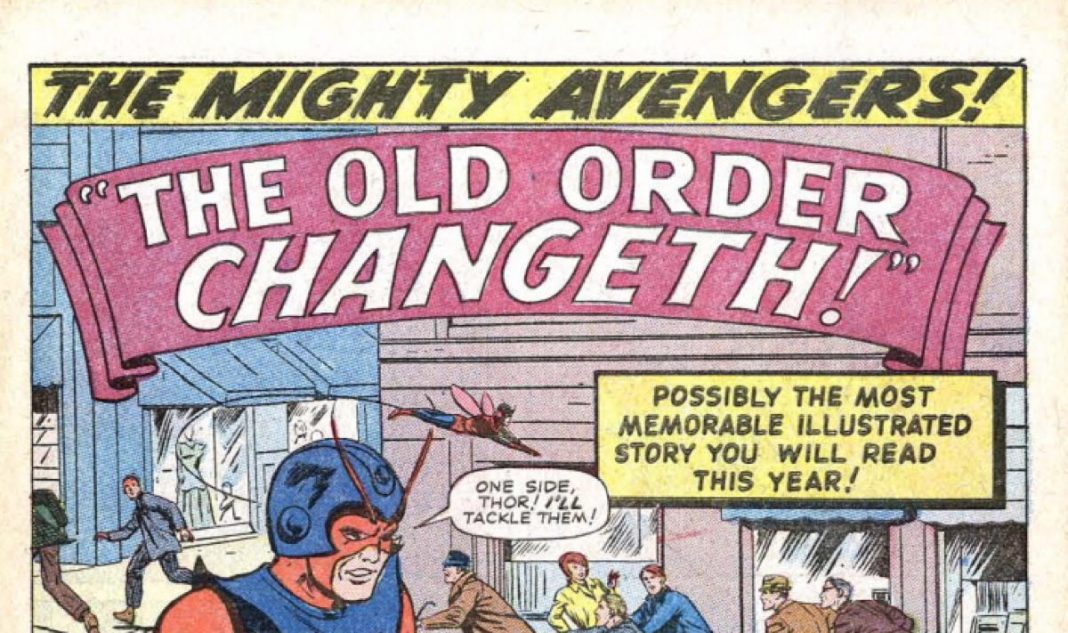
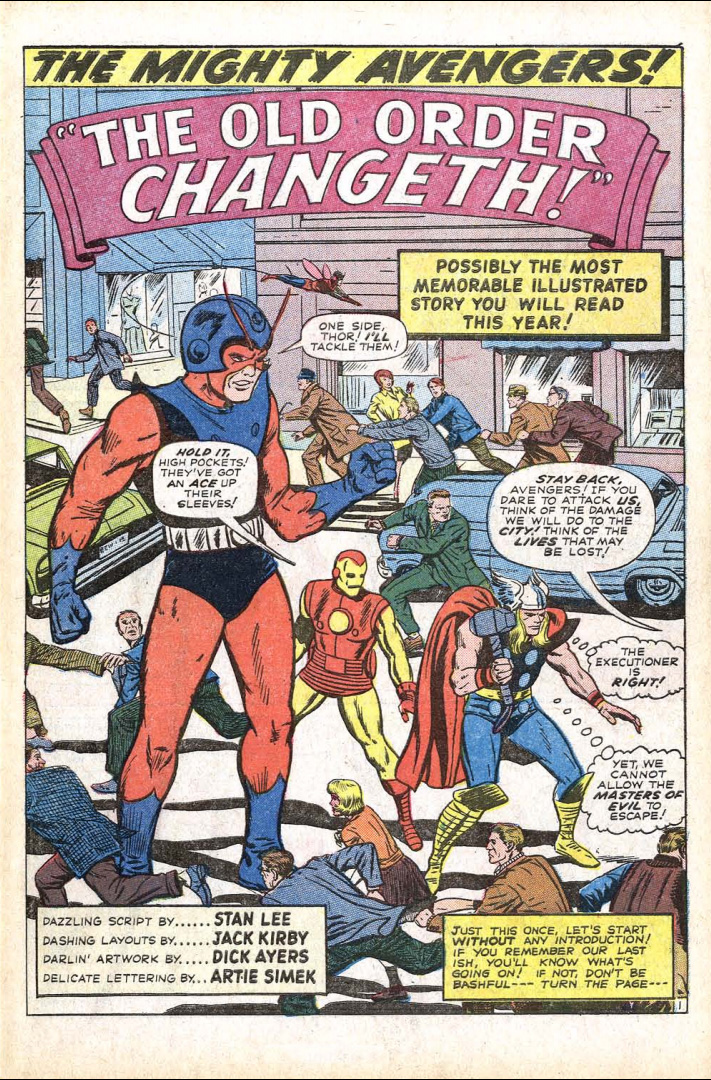
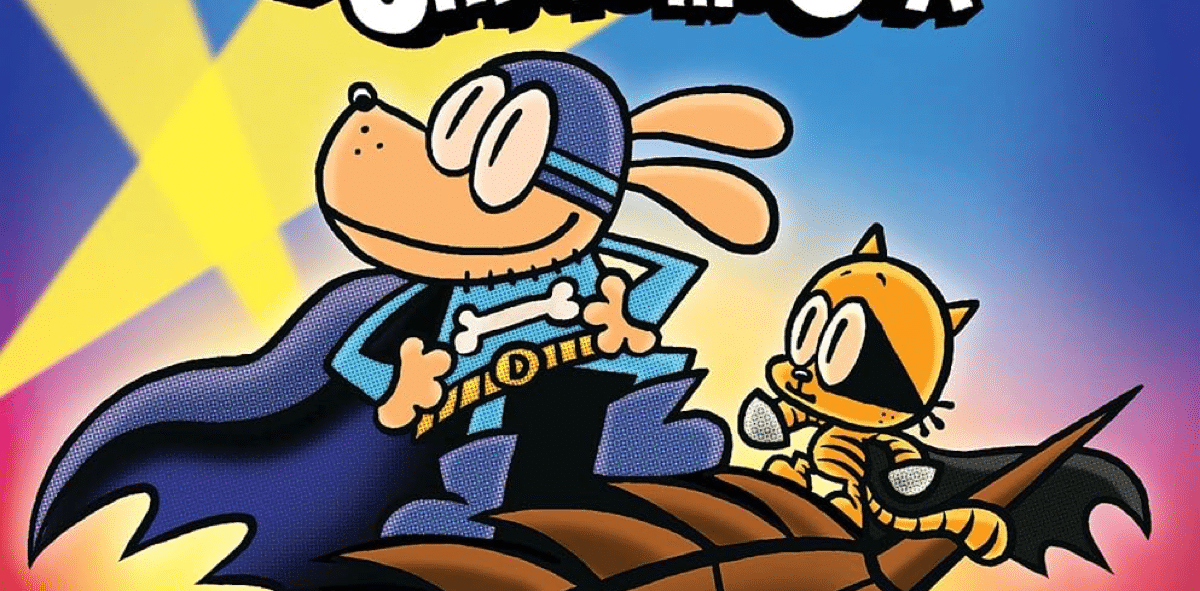
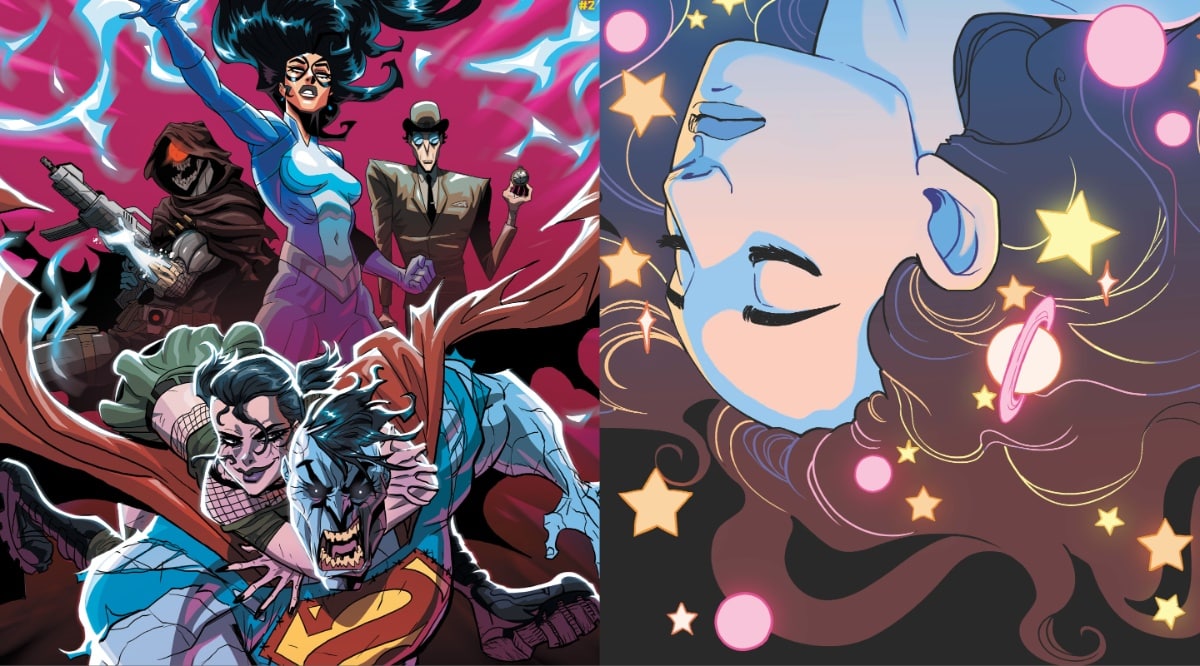
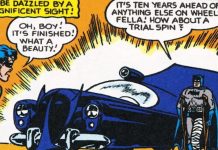


For example: https://icv2.com/articles/news/view/48029/idw-diamond-operating-under-expired-agreement
I noticed that you think DC will move over to PRH in Q1 ‘22. Does this mean you’ve changed your opinion that DC could be licensing out their periodicals in ‘22? Or do you still think that is the likely outcome, just further down the road?
Good question, Stephen! I think that AT&T will stop publishing comics if DC can’t show meaningful revenue, and PDQ at that. I think that as long as DM distro is stuck at Lunar, there’s zero chance to meaningfully grow their circs because many many retailers refuse to give them (or DCBS) any extra penny that we don’t have to) — therefore I suspect that DC’s best chance to grow is in PRH’s arms.
-B
What about the retailers that don’t qualify for credit at PRH? The ones that Diamond has been floating or are on COD terms? Is PRH likely to extend the same grace that Diamond has in order to keep these small shops open?
Those stores will stay as pay-as-you-go, as far as we know. However, if those stores pay using a CASH BACK credit card, it could improve their discount and economic advantage even further.
I would be stunned if PRH offered long-term debt relief like the way almost every store in the DM has benefited from Diamond at least once in their lives, but PRH’s STANDARD terms at net 60 EOM, if you pass the credit check, and Diamond starts everyone at COD.
There’s a decent chance that the number of new DM stores OPENING under PRH could be meaningfully higher.
-B
What do you think the future is of things like incentive variant covers? I cannot see PRH wanting to deal with the complex ordering formulae that some of those engender. Same with retailer exclusives…
Couple of thoughts. Bear in mind, these come with an “as I understand it” prefix, and I could be very, very wrong:
1) I thought Image and Dark Horse were also brokered/agency with Diamond, and it was only the newer “Premier” publishers (IDW, Boom, etc) who didn’t get that?
2) Rich J’s been saying PRH are contractually prevented from distributing Marvel to the book market by DC’s contract with PRH. One might think that they would be interested in changing that now – would they be willing to take on DC for the DM without having that clause struck out as part of the negotiation?
@Dave Carter: I am positive that in the short term PRH is just going to do whatever Marvel wants until they can see what is actually what, and marshal an actual economic argument one way or another.
@SanityOrMadness
In both cases I have no more real info than you have (possibly less!)
1) It may well be; but DH and Image for sure do not have a separate TOS
2) I heard that as well, but that doesn’t sound legal to me, and on the utter surface sounds like Restraint-of-Trade (I mean I would sue if a competitor of mine signed a contract that blocked me from buying or selling something to a third party).
And every contract has an ending date after which it needs to be renegotiated; there is less than a zero percent chance that DC would move BOOKSTORE distro from PRH to their other current partner, Lunar.
-B
What was the last comic book to go big before transferring to other media?
Currently, digital seems to be the best way to go for aspiring cartoonists.
Webtoons and Facebook being the two major means of distribution…
If DM retailers are adverse to ordering small press titles (where one unsold copy can wipe out the profits of five sold copies?), if Diamond is unwilling to encourage the next Bone, why would a creator use the small press (formerly self publishing) business model, when digital distribution is cheaper, easier, allows for greater discovery and sharing, and greater profits?
I define comics shops as either hobby shops (especially if they also sell a lot of other merchandise like card games and toys) or as specialty bookstores (similar to Rocketship and Bergan Street Comics). It’s interesting buying comics in Montreal; you have BD bookstores specializing in French-language comics, and then you have the English-language comics shops.
Given PRH’s emphasis on independent bookstores, I wonder if there will be indie bookstores willing to offer pay-in-advance subscription services to collectors?
I really appreciate the detailed explanation you give in the article. As a long-time reader/collector, I’ve not paid a lot of attention to the day-to-day workings of the shops I patronize. I have followed the ups and downs of the industry, as I’ve been buying comics since the late ’50s when my mother first bought me a few for a hospital stay.
I recall the closing of the smaller distributors and the rise of Diamond as just about the only deal in town. Interesting to see how it now will try to survive as everything goes down.
I share your concern for the very, small publishers and self-publishing creators in the coming years.
TMNT, Bone, and Walking Dead are literally 40, 30, and 20 year old examples. That path is already dead.
@sanityofmadness: I also reported that Random House cannot distribute Marvel comics because of a stipulation in the contract when DC went with (then) Random House for bookstore distribution – TWICE and BEFORE RJ did! Does no one read what I write! I guess I need a headline for every sentence like other sites do.
I wouldn’t be surprised if PRH asks for restriction on Marvel GNs be dropped in exchange for taking on their periodicals, but who knows.
As it is I’m curious, does this restriction prevent PRH from distributing Marvel GNs to comic shops or only bookstores? Or does Marvel’s deal with Hachette prevent them from distributing their GNs via PRH to comic shops? Or do those companies see any distinction between DM comic shops and bookstores?
Setting aside artistic and creative merits, doesn’t a forced culling potentially create a more economically lucrative business for all remaining parties? Meaning- if the miscellaneous micro selling books no longer get distributed because they aren’t generally profitable, don’t a lot of those dollars and shelf space go to books that have broader appeal, making more money for the shops, publishers, distributors and creators?
Personally my hope is this ends up being the cleansing the business needs and it is built back up more thoughtfully and profitably for all involved.
My understanding is that PRH is not allowed to sell Marvel graphic novels/TPBs to the bookstore market. The new distribution deal for periodicals includes selling graphic novels/TPBs to the Direct Market, the same as Diamond had been doing. Should DC negotiate to have PRH distribute their periodicals then I would imagine that PRH would ask for that condition to be lifted. But if the Hatchette deal with Marvel is exclusive then its a moot point until that contract expires.
Interesting.
Great analysis. But your historical memory is wrong.
You wrote: “We know what happens to a distributor who loses both Marvel and DC’s business, and have Image comics as their largest exclusive vendor – this exact scenario already put Capital City out of business in 1996!”
When Marvel went alone and DC went with Diamond in April 1995, Image, Dark Horse and Acclaim/Valiant Comics, announced exclusive arrangements with Diamond at San Diego Con in August. Capital City lasted a year until Diamond bought them in July 1996. Their largest publishers was Viz.
Brian,
Kudos to you for this insightful and fact filled article. I think I would be at a loss to try and pull so much information into a cohesive piece like you did.
Our company was in the comic market years before the inception of the DM and I believe these changes were both necessary and inevitable.
I’ll let the younger businesses comment.
We are watching and waiting……………..
What we came to call the Direct Market began in summer 1968 when Berkeley based Print Mint took Zap Comics into national distribution. Moe Moskowitz, owner of world famous Moe’s Books on Telegraph Ave put up $20,000 to front establishing a new comic book company handling Zap, Yellow Dog, Gothic Blimp Works, others doing self-published Feds N Heads by Gilbert Shelton, Bijou Funnies by Jay Lynch & Skip Williamson, others. Start Ups Rip Off Press, San Francisco Comic Book Company, Last Gasp, others began with their books distributed by Print Mint until they grew their own networks.
This was same time in 1968 the much larger, far older, national ID system of then 900 distributor wholesalers servicing some 115,000 periodical outlets gave up on the then 12 cent comic book following the huge second largest “glut” of two staple periodical comic books in USA history brought on a largely forgotten Batman TV show fad craze which flooded the then system causing many of the larger distributors to place comic books at the lowest rung of processing after everything else was prepped for sale.
1968 thru 1974 saw new comic books then printed and shipped out of World Color Press, Sparta, Illinois via trains, boat (Mississippi River), trucks all over the country collapsing in simply getting on to the stands
An “honor” system for affidavit returns saw a huge increase in fraud as comic book dealers were going into many of the IDs buying up most ALL the copies of comics by certain creators such as Neal Adam’s X-men, GL/GA, or Jack Kirby’s New Gods, Forever People, other titles which seemingly were not good sellers for the NYC publisher, but were available in quantity from those who were holding.
“Speculators” were slowly eating the news stand business alive. I explain this in much greater detail in Comic Book Store Wars.
The term “regional scarcity” became common in fandom zines and at the conventions which began growing by the late 60s. As the early 70s unfolded the situation began growing dire year by year but I am getting ahead of myself
An intense one on one conversation I had with Will Eisner at his 2nd ever comicon, Multicon June 1972 in Oklahoma City very early on a Sunday morning with us talking about how to “save” the American comic book had WIll saying to me, “Young guys like you need to open comic book stores as close to university and college campuses as possible”
A couple months later (us being all of 20 years old) I partnered up with John Barrett and Bud Plant to open the first Comics and Comix store 212 Telegraph Ave just a few blocks from UC-Berkeley (and just one block from Moe’s Books).
Six months April 1973 later we hosted the first Bay Area comicon which was in ASUC on the UC-Berkeley campus. By the end of summer we had more C&C locations in San Francisco, San Jose and Sacramento.
That same summer June 1973 SCOTUS had made their Zap Comics #4 Crumb Joe Blow ruling rejecting the concept of such “free speech” which ended up establishing the concept of “local community standards shall prevail” which shook up the alternative comix community making sending certain types of comics crossing state lines a Federal offense.
From 1968 thru summer 1973 Print Mint sold over 5 million comic books. Their initial wholesale distribution base built from some 40,000 college & university book stores and “head” shops.
That summer across the country more than 80 “busts” were recorded I know of which included one Phil Seuling for selling Zap Comics to an undercover police guy using his 15 year old son as bait. Phil and others from his NYC show in Manhattan spent the night in jail.
Phil was then in process of losing his Brooklyn high school English teaching position. At his July 1973 Seulingcon in Manhattan one Edward Summer did some thing then brand new.
Ed Summer went into the Manhattan periodical distributor cutting a deal to score ALL the new comic books from Sparta for that week. ALL of them.
In the mid 1990s as Marvel bought Heroes World causing similar concerns of death and destruction shake ups in the comics world, I interviewed Ed on tape for a few hours in NYC walking him thru that key pivotal week.
At the time the interview was set up by long time friend Paul Levitz. Ed has long since closed up SuperSnipe having moved to Buffalo NY.
We coordinated the time of him driving down the length of New York as I drove in from Fremont Nebraska for one of the NYC shows I was by then constantly doing having moved out from Calif in 1994 following the death of Rick Griffin.
Rick’s being killed caused me to lose desire to “live” in book store caves any longer. Coupled with the Wall St mentality at Marvel pumping out all those enhanced covers and other gimmicks
I figured a 22 year run 1972-1994 of being involved in over 13 different comic book stores around the Bay Area over those decades was enough time invested,
Along with a couple thousand die-hard comics fanatics I was at that 1973 Seuling show where Ed had set up a couple dozen 50 pocket spinners, no tables, full of new comic books. It was like piranha feeding frenzy.
Watching that energy unfold also were Phil and DC’s Sol Harrison.
If you place them in eyeball reach, they will come and buy, read. (That is what is needed once again – now.)
During 1969-1973 comic book cover prices were surging from 12 to 15 to 20 to 25 cents. Soon enough to hit 30 cents. In 1969 my first job at a hotel was 65 cents an hour. It is all relative.
The largest drop off in our customer reading base we noticed back then came in the mid 70s was when most of the comic books went to 35 cents each.
One could no longer acquire 3 comics for a buck. A straw which broke many a proverbial camel back. It was that extra nickel which broke many a collector’s desire to keep up reading comics. It mostly simply psychology.
This was also the time span when World Color switched out from metal printing plates to a vegetable organic based plate which caused the plates to decompose after some time on the presses. The books were looking muddy.
We began trying to figure out how to entice people to come back to be regular reader customers again.
When Phil began his Seagate experiment with partner Jonni Levas, which began shipping Fall 1973, there were maybe 50 comic book stores in all of America.
Most of his wholesale customers were “speculators” – this was what the Code Comics aspect of the Direct Market was foundationally built upon
It was “speculator” investors who fueled the energy inside this system begun for alternative comix distributed by ‘underground” methods.
Sold on a non-returnable basis
By summer 1979 at a special San Diego Comicon meeting then new Marvel President James Galton informed us heavy hitters inside what we had begun calling the Direct Market (no more than 80 souls) we were still only like 5% of Marvel’s cash flow profits.
Byrne X-Men ruled the roost. As Best of Two Worlds I was pre-ordering 10,000 an issue by #114. Speculation works great when only a few were doing it.
As Phil and the other then new DM distributors thru the 70s had pulled most of the speculators away from going into the ID wholesalers, that ID segment still placing comics periodicals on news stands were still 95% of Marvels net profits
But, Galton said, we were showing promise which Marvel was seeking to expand upon. (By early 1980 Marvel jumped in two feet into the deep end of the pool offering all sorts of incentives too numerous to elucidate upon here)
The main thing which came out of that seminal 1979 SDCC Marvel meeting was when Galton asked for what “we” wanted and needed to grow the DM. Many of us began talking loudly at the same time in a smallish room. The din was getting stronger.
Then Steve Schanes cupped his hands, shouting over the cacophony of voices, “Give Us A Book”
The room abruptly went silent.
Schanes repeated himself a bit softer expanding upon his line saying, give us DM guys a few “exclusive” to DM comic books to show what we could do. The room was in 110% agreement.
Moon Knight #15, then by a young up & comer named Bill SIenkiewicz, came one of three experiments. I forget (off top of my head this sec) what the other two were.
The numbers were huge. And we were off to the races, but still mostly tied to “speculators” buying up large quantity for later re-sale
There is much more more, but the key ingredient I wish to impart is since the mid 70s the Direct Market has ALWAYS been propped up and ultimately expanded by “speculators” in what ever form they evolve (as bizarre) mutants) over the decades.
The Direct Market was created by summer 1968 by alternative comix creators, many self publishing, seeking distribution by what we would call “underground” methods.
Lost souls who do not understand the myths behind the history origins tend to think it was thunk up by Phil Seuling with code comics from World Color.
Even Phil in his last interview published in 1984 shortly after he died, when WIll Eisner asked him where the idea came from, began talking about Crumb, Zap Comics, Shelton. The stuff he was busted for and spent a night in jail
My more than half a century examination of how comics get to market has informed me (and others who participate in such mundane matters) the methods and who is distributing comic books pretty much changes every generation. Change is Stability.
What is old becomes new again.
Comic Book Store Wars is finally coming soon.
OMG this is waaaay too long & your sentences are so damn long & confusing. I had to give up reading.
Nice to see ‘Tilting at Windmills’ back in action. It’s a great source of ‘insider’ analysis, and I send best wishes for a full convalescence to the Hibbs family.
I was intrigued by the sentence ‘Most graphic novels that we receive from PRH do not arrive in anything approaching “mint” condition………..’
Seems like 9 out of every 10 GN’s I purchase from amazon are battered or dinged in one manner or another. If this is originating at the [publisher] end, and not in the amazon warehouse (where, we are told, workers are frantically running around filling orders to meet management’s ergonomic threshold stats, slinging items into boxes in a ‘I-don’t-give-a-sh*t’ way, and furtively stopping every now and then to pee into empty 16 oz soda bottles), then complaining to amazon seems like it won’t be addressing the root of the problem……?!
Comments are closed.